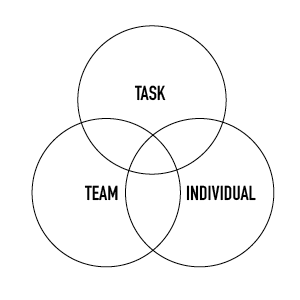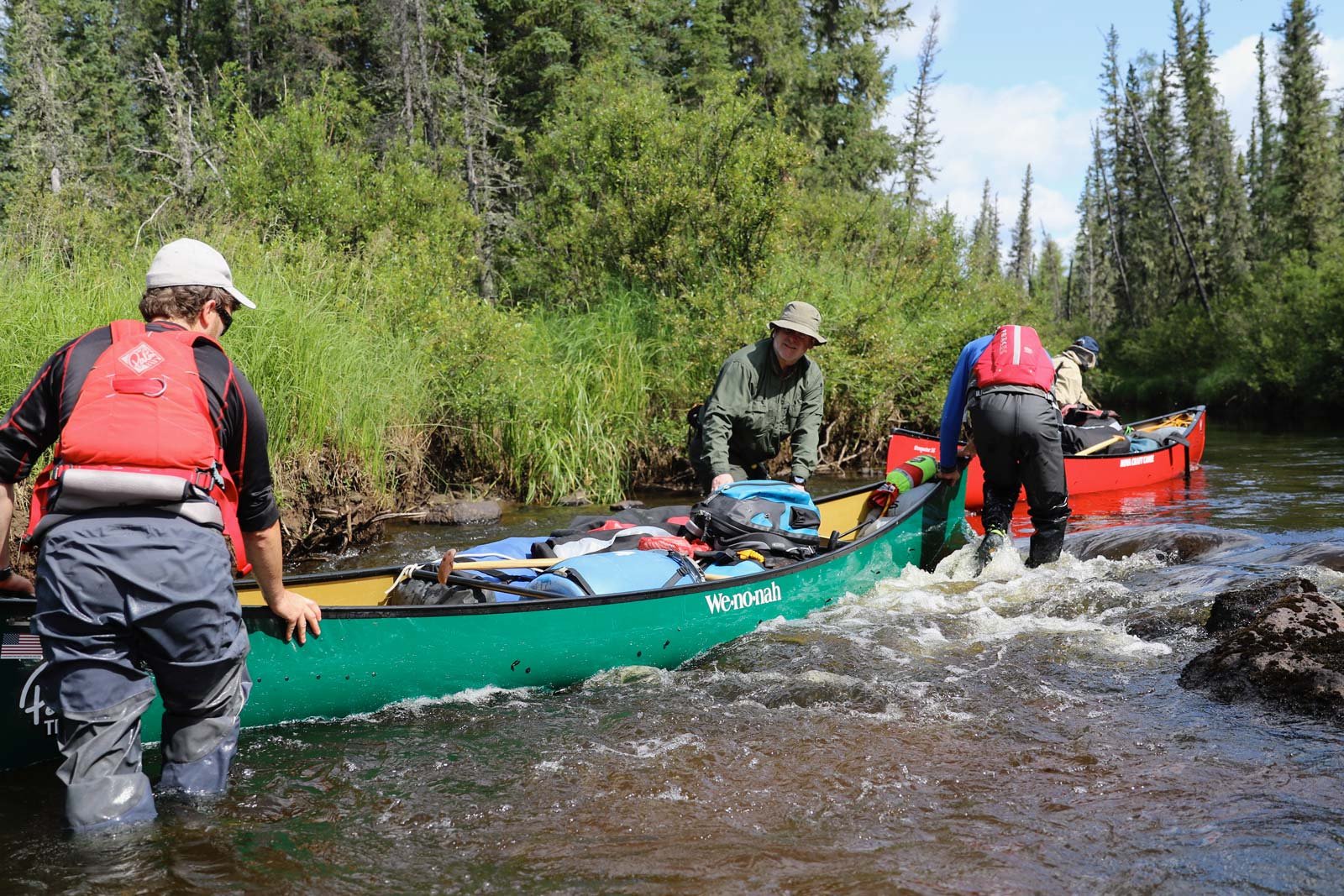Working as a Mountain Leader is ace, I love it. I spend time in beautiful places and get to hang out with interesting people. My main priority is keeping them safe, but I try to do more than just making sure I return with the same number of people I set out with! I’ve been working as a Mountain Leader for 15 years, and worked on the courses for 10 years. I’ve thought a lot about what it means to be a good leader over the years and so I’d like to share some examples of different leadership ideas and relate them to looking after people in the mountains. One of the great things about being a Mountain Leader is that every candidate can create and bring their own unique style to the role.
Before we get stuck in, I’d recommend reading the Mountain Leader syllabus if you haven’t. The Mountain Training website, and the course handbook Hillwalking by Steve Long, contain all the information and guidance you’ll need. The group management and responsibilities of a group leader sections would be most relevant to this article. Being familiar with these aspects of the syllabus is important if you’re thinking of booking an assessment, as these areas will be assessed throughout the course.
Hopefully this article will help to broaden your knowledge, present new ideas and act as a point of reference.
So, what makes a good leader?
If someone asks, a number of buzz words might spring to mind, nice attributes you might commonly associate with good leadership. Professional, a good communicator, someone who inspires confidence, someone who is supportive, has empathy, knowledgeable, the list goes on. It’s interesting if you reverse the question, and consider what you think would make a poor leader? Have you witnessed any particularly good, or bad, displays of leadership ever? Why was it so? I think I’ve developed my leadership skills a lot from reflecting on my own experience and watching others. Maybe, more simply, being a good leader requires someone to do the right things at the right time to keep their group safe, having fun, and learning.
Doing the right things at the right time
The mountain environment is dynamic, as are the needs and wants of our clients. As such, leading groups in the mountains requires dynamic leadership. Overall, as leaders we want to give the people we’re with on the hill the most rewarding journey; one that’s fun, interesting and safe. Having a flexible leadership style should allow us to achieve this. The group’s objectives and ability will dictate how I lead depending on the terrain I encounter. If I was leading in an area with little objective risk, such as a grassy hillside, I’d probably give the group more responsibility and ownership of what we’re doing. Conversely, I’d take a much more direct leadership style if I was leading a group across an exposed scramble like Crib Goch, as the safety management side of things is the most pressing.
Have a look at the table below, each style will suit a certain situation or group more than others:
|
High SUPPORT Low |
||
| Support | Coach | |
| Which way looks best? | It'd be easier for you that way | |
| Empower | Direct | |
| Whichever way you want | GO THERE NOW | |
| Low DIRECTION High | ||
Hersey & Blanchard (1969) “Life cycle theory of leadership” Telling, selling, participating and delegating were the actual headings, adapted by Dr. Samantha MacElligott (2019)
It might be useful to think about the different groups we often work with as Mountain Leaders. You could use the table above and examples below to consider which styles would probably be most used for each group, and how they might change throughout the day.
- Primary school children on their first mountain walk.
- Teenagers on their Gold Duke of Edinburgh assessment.
- A group of adults doing the National Three Peaks.
- A family group who’d like to have a mountain adventure.
- A group of adults booked onto a navigation course.
I think a good leader can subtly shift between these styles throughout the day towards a common goal, without their group realising. It’s sometimes the summit, but it doesn’t have to be does it? Does it matter if that big cairn at the top of the ridge becomes the summit, for now, for the group? It’s good to understand that you can achieve an outcome by being either transactional or transformational in your approach. Do we just want to achieve the outcome; the summit, the big tick? Or, actually do we invest some time into empowering the group with handy hints and top tips, so they can feel more independent, as if they’re calling more of the shots? These approaches can change through the day accordingly.
Leadership styles could be described by considering how much support is given to a person or group, and how direct your approach should be. As more focus is put on learners, they’ll be given the chance to make mistakes and try again. They will then become independent, skilled individuals, who are capable of choosing for themselves and making their own decisions.
Imagine taking a novice group out for a quality mountain day. At first everything is new, so you teach the foundations, you may be direct, but you develop their understanding. As the group becomes more skilled, you could allow more freedom; allowing them to navigate and route find with the right amount of supervision. It might take a while to coach someone how to orientate a map without a compass, or to measure slope aspect, you may try every trick in the book, using strategies and applying rules. At some point something will click, the dots join, and you can begin to step back; reducing your support to allow the learner to feel more independent. With the opportunities to take ownership of their own learning and make their own decisions, people feel empowered. It’s ace to watch!
It’s important to remember that novice hillwalkers may have no concept of risk, or understanding of the environment. As a result, they may not see the dangers which are quite apparent to you. In this case, adopting a more supportive or persuasive coaching style might be best, they can understand more and choose accordingly.
Sometimes though, as a leader, you need to be very direct, or even dictatorial. This is more commonly needed in consequential terrain or poor weather. If route finding or navigating is difficult you’ll need to at the front; skirting around dangerous ground, managing tricky steps, and checking the group are doing as you ask. Lots of experience in steep, awkward ground will stand you in good stead for this. From experience you can draw on an ability to interpret all the information and make calm rational decisions. If this approach is used too much in a day, or when it really isn’t needed, I think it removes a lot of enjoyment and learning potential for a group.
SOme useful models to try:
I wanted to include the models below as I think they are useful to consider when approaching your day in the hills. I often apply them at different times when I’m working and when I’m teaching on Mountain Leader courses.
Action Centred leadership
John Adair’s Action Centred Leadership model is a useful reminder of how you can manage your day. Planning takes each circle into consideration, ensuring nothing is missed out. By chatting with your group, you’ll have come up with the TASK for the day, the overall objective. Over the course of the day you’ll adapt things to suit the TEAM and the INDIVIDUAL. As I’m walking, I might be thinking;

- Is the objective still appropriate? (TASK)
- Is this a good pace for everyone? (TEAM)
- Did Lou understand my explanation of taking a bearing? (INDIVIDUAL)
Too much time focusing on one area requires more time spent in others to balance out. If the circles are evenly balanced the group / team shouldn’t disengage, and each individual should feel they’ve received the attention they desire or need.
INSPIRE
Another model I like which has been developed by Mountain Training with Dr. Samantha McElligott’s is the INSPIRE model. It lays out 7 key leadership behaviours that will help you to inspire, enable and develop those you lead.
I - Inspire and Motivate your followers with unified vision
N - Nurture an environment of team focused goals
S - Setting the example you want to see in your followers
P - Praising and giving feedback to your followers to help them develop
I - Insist on setting high standards relative to each individual
R - Recognise and respond to each individual’s needs
E - Encourage followers to create and implement through solutions
It is a model of transformational leadership and I find it helps underpin the ethos of being a mountain leader. I find works best with groups who would like to learn (navigation course), as opposed to groups just experiencing something (National Three Peaks), where the objective is the summit, the selfie and finishing. That might require a more transactional approach to your leadership style. How do you think that would be different? I’ve worked with lots of those groups over the years and was quick to realise that the objective is all that matters and my role was safety, navigation and encouragement.
Comfort Zones and Mindsets
Thinking about human behaviours and learning and how people respond to different environments is super important. We like security, comfort, the easy life…  So it’s not uncommon to have feelings of fear, self doubt and trepidation when doing something new, challenging or different to your normal routine.
So it’s not uncommon to have feelings of fear, self doubt and trepidation when doing something new, challenging or different to your normal routine.
Taking on these challenges, overcoming fears and negativity enables you to learn new things and reach goals and improve both physically, mentally and professionally.
Your boundaries grow, your limits pushed and your resilience strengthened. You achieve new goals and feel confident as you expand your horizons.
Everyone can succeed if they are willing to leave their comfort zone. Anyone can learn with the right learning environment. It’s about creating an environment that has ways to tease one from their comforts and to reach new heights.
I’d use this model to help someone to develop the belief in themselves to work towards a greater goal. Much has been written about the notions described above and of the Growth or Fixed Mindsets. I think it’s good to be familiar with these models, they help me to coach people in more demanding or potentially dangerous settings, such as moving into an exposed position on a hillside or tackling a rocky step. A fantastic TED talk by Carol Dweck is on youtube, she introduces the concepts of Growth Mindset and it’s really interesting.
I hope you found some of the ideas in this article useful and you’ve possibly found an area you’d like to look into a bit more. I’ve only scratched the surface in terms of models and theories that can be researched or referenced, these are just a few ideas and principles that can hopefully help you in the future. I also hope that I’ve shown there’s more to leadership than simply leading the way; we teach, coach, inspire, manage risk, educate, navigate... the list goes on! We’re many things to people throughout the day, our leadership styles reflect this. This is what makes it such a rewarding job.

